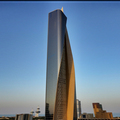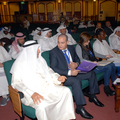
-
This is the exercise book accompanying Drilling Fluid Engineering.
This book presents how to apply fluid mechanics on drilling fluid related challenges and explains the related physics involved and the different engineering approaches. Mud has many functions, the single most important one is to remove the cuttings a) away from under the bit and b) transport them from the bottom to the surface. Viscosity of drilling fluids is not a constant parameter; it varies with shear rate. Pipe, rock bit and annular friction pressure loss has high importance for several tasks. Stable wellbore includes many sub tasks like chemical stability and filtration control.
- Content :-
- Fluid Properties
- Filtration control
- Filtration control
- Density control
- Density control
- Rheology control
- Rheology control
- Flocculation
- Mud contamination
- Flocculation
- Fluid additives
- Fluid additives
- Rheological models
- Bingham/ Power law
- Bingham/Power-law
- Bingham / Power-law. Regression
- Effective viscosity
- All models
- All models. Regression
- All models
- Drilling fluid dynamics
- Velocity profile. Continuity equation
- Velocity profile. Momentum flux
- Velocity profile
- Pressure loss vs. rheology
- Pressure loss vs. rheology
- Pressure loss. Power-law
- Pressure loss. Turbulent. Energy equation
- Pressure loss vs. flow rate
- Pressure loss. Field data
- Pressure loss. Effect of rotation
- Pressure loss. Bit nozzles. OFU
- Swab pressure. Cling factor
- Hydraulic program
- Mud pump issues
- Optimal nozzles? Section wise
- Liner selection. Section wise
- Hydraulic program. Section wise
- Optimal parameters for BHHP. OFU. Section wise
- Liner selection. Complete well
- Liner selection. Complete well
- Well challenges
- Cuttings concentration
- Cuttings concentration
- ECD. Barite
- ECD. Fluid and flow
- Water activity
- Shale stability
- Wellbore problem
- Supportive Information
- Pump (National 12-P-160) and hydraulic program data
- Pressure loss equations
- Conversion factors and formulas
- Solutions To Exercises In Drilling Fluid Engineering
- Fluid Properties – Solutions
- Filtration control
- Filtration control
- Density control
- Density control
- Rheology control
- Rheology control
- Flocculation
- Mud contamination
- Flocculation
- Fluid additives
- Fluid additives
- Rheological models – Solutions
- Bingham / Power-law
- Bingham / Power-law
- Bingham / Power-law. Regression
- Effective viscosity
- All models
- All models. Regression
- All models
- Drilling fluid dynamics – Solutions
- Velocity profile. Continuity equation
- Velocity profile. Momentum flux
- Flow profile
- Pressure loss vs. rheology
- Pressure loss vs. Rheology
- Pressure loss. Power law
- Pressure loss. Turbulent flow. Energy equation
- Pressure loss vs. flow rate
- Pressure loss. Field data
- Pressure loss. Effects of rotation
- Pressure loss. Bit nozzle. OFU
- Swab pressure. Cling factor
- Hydraulic program – Solutions
- Mud pump issues
- Nozzle selection. Section wise
- Liner selection. Section wise
- Hydraulic program. Section wise
- Optimal parameters with BHHP. OFU. Section wise
- Liner selection. Complete well
- Liner selection. Complete well
- Wellbore challenges – Solutions
- Cuttings concentration
- Cuttings
- ECD. Barite
- ECD. Fluid and flow
- Water activity
- Shale stability
- Wellbore problems














